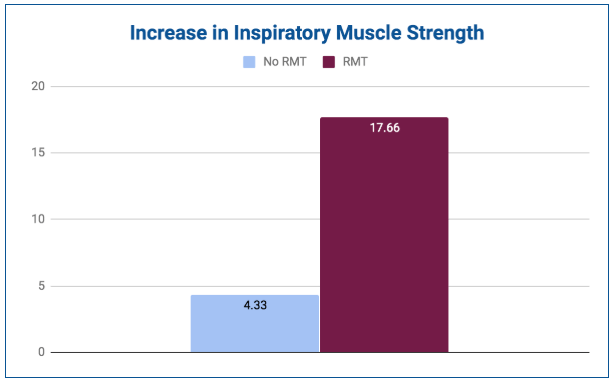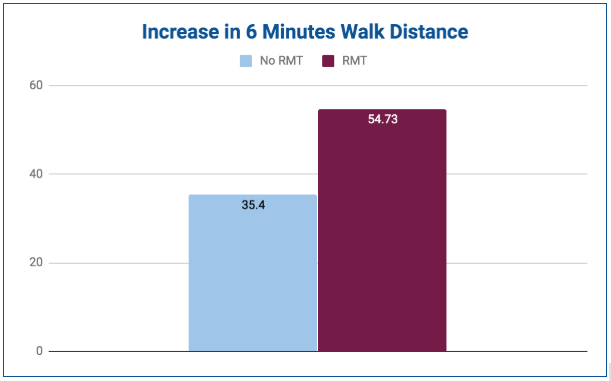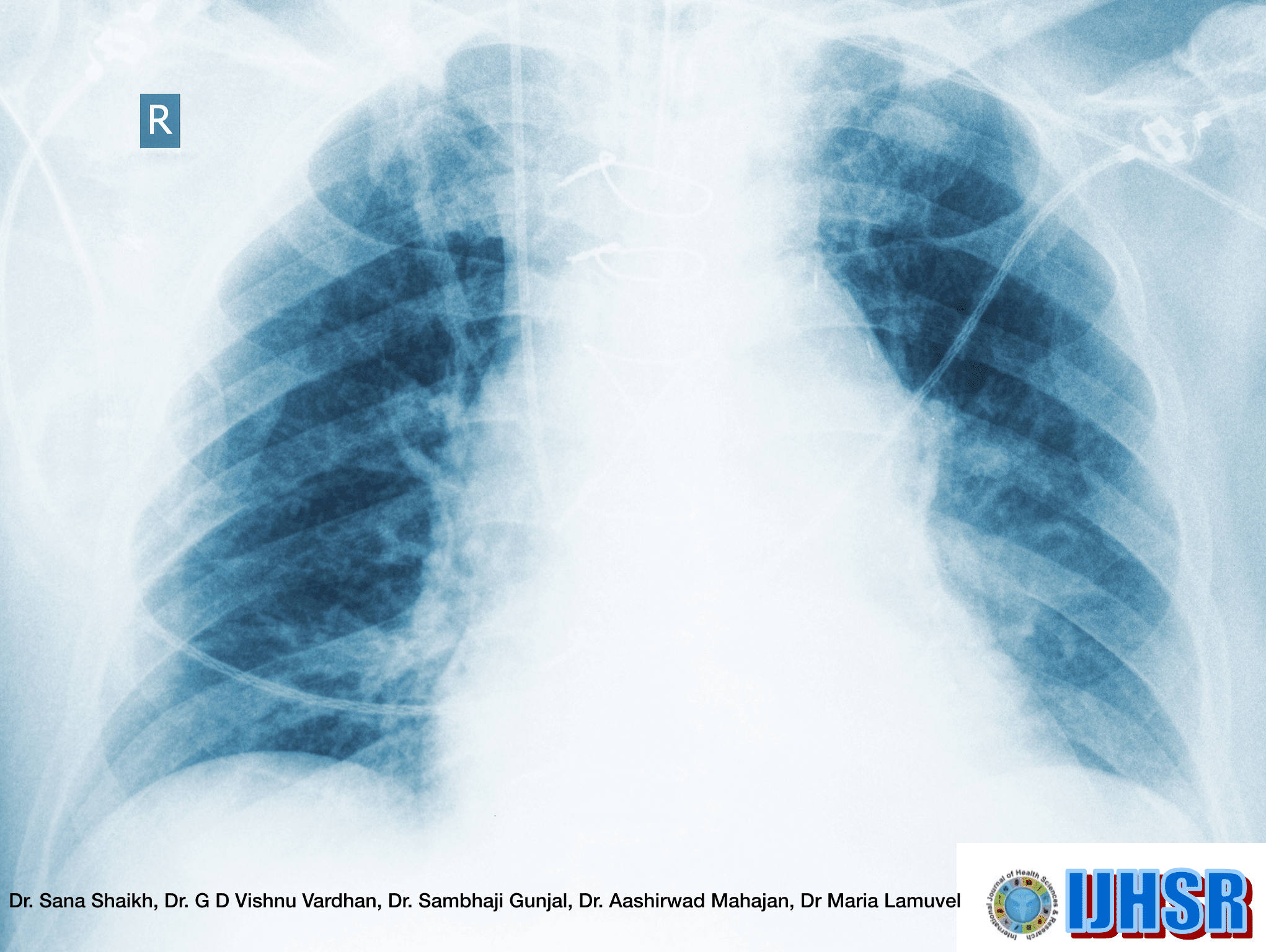CLINICAL CONTEXT AND KEY FINDINGS
- Dyspnea and exercise intolerance are the most burdensome symptoms of COPD
- The underlying reason dyspnea and exercise intolerance contributes to respiratory muscle weakness
- 2 weeks of respiratory muscle training (RMT) using the Breather significantly increases respiratory muscle strength and exercise capacity in COPD patients
- RMT using the Breather is effective in alleviating the major symptoms of COPD
WHY THIS STUDY IS IMPORTANT?
People with chronic obstructive pulmonary disease (COPD) experience breathlessness or air-hunger (dyspnea) as the most burdensome aspect of the disease. Unfortunately, there is no medication that can improve the reasons for breathlessness – although bronchodilators provide necessary immediate relief. But what if breathlessness, and with it the burden of COPD, could be reduced in just 5 minutes per day by strengthening your breathing muscles? Without medication, exercise, or painful interventions?
A study with 30 patients with COPD recently showed that using the Breather for 2 weeks significantly improves the underlying cause of dyspnea, and improves exercise capacity (walking distance).
BACKGROUND
COPD is an incurable lung disorder, and is a leading cause of death and chronic disability. The progressive limitation of airflow through the airways causes chronic inflammation of the lung, excess mucus production, loss of lung elasticity and hyperinflation. Therefore, the lungs are not able to fully recoil during exhalation, trapping residual air in the lungs, and decreasing the volume of the next inhale (decreased inspiratory capacity). The diaphragm, representing the main breathing muscle, loses its ability to fully contract during inspiration, reducing the force of the airflow into the lungs during inspiration. This situation is then met by a desire of the body for oxygen during exercise (respiratory demand), which the lungs and respiratory muscles are unable to meet, causing the feeling of dyspnea and exercise intolerance.
From a medical perspective, dyspnea and exercise intolerance are based on weak respiratory muscles unable to fulfill the required work of breathing. Specific strengthening of the respiratory muscles will improve the muscles’ ability to meet the demand and reduce the perceived breathlessness and exertion.
CLINICAL STUDY INVESTIGATING THE USE OF THE BREATHER ON COPD [1]
Researchers at the Pravara Institute of Medical Sciences in Loni, India, recently set out to investigate the respiratory muscle strengthening effects of the Breather in patients with mild to moderate COPD. Participants of the study were asked to train using the Breather for 2 sets of 10 breaths, twice per day, for 2 weeks. The intensity of the training, guided by the settings of the dials for inhale and exhale, was chosen to exert the respiratory muscles, but to not fatigue them during a training session. The Breather is a respiratory muscle training device strengthening both inspiratory and expiratory muscles by breathing against a set resistance, which can be increased in line with training progress.
The researchers measured respiratory muscle strength and exercise capacity before and after the 2 week study period, and compared it to a control group doing diaphragmatic breathing without resistance.
RESULTS OF THE CLINICAL STUDY
Comparison of baseline and final data assessed before and after the 2 week study period showed that using the Breather increases respiratory (inspiratory) muscle strength by 31%, compared to an 8% increase in the control group. In addition, the researchers found that patients who had used the Breather could increase their distance walked in 6 minutes by 55 feet, compared to an increase of 35 feet in the control group. These findings show that using the Breather for 2 weeks effectively reduced respiratory muscle weakness, suggesting a decrease in associated dyspnea, as well as an increase in walking capacity.
Figure 1: Respiratory Muscle Training (RMT) using the Breather leads to a significantly bigger increase in inspiratory muscle strength (p<0.0001)

Figure 2: Respiratory muscle training (RMT) using the Breather leads to a significantly bigger increase in distance covered within 6 minutes (p<0.0001)

DISCUSSION AND CONCLUSION
RMT using the Breather effectively improves respiratory muscle strength and exercise capacity in COPD patients within only 2 weeks. These findings are in agreement with other studies, showing that RMT increases inspiratory muscle strength by 24% in cardiac patients, thereby reducing dyspnea by 29%, underlining the correlation between respiratory muscle strength and perceived dyspnea [2]. In addition, the significant effects seen here in patients with mild to moderate COPD within 2 weeks suggest that it may be possible to reduce symptoms and potentially slow down the progression of COPD by regular RMT.
RMT using the Breather is a safe, easy, and effective measure to reduce the burdensome symptoms of COPD, with the potential to slow down disease progression.
References
- Shaikh S, Vishnu Vardhan GD, Gunjal S, Mahajan A, Lamuvel M. Effect of Inspiratory Muscle Training by Using Breather Device in Participants with Chronic Obstructive Pulmonary Disease (COPD). Available: http://www.ijhsr.org/IJHSR_Vol.9_Issue.4_April2019/12.pdf
- Cahalin LP, Semigran MJ, Dec GW. Inspiratory muscle training in patients with chronic heart failure awaiting cardiac transplantation: results of a pilot clinical trial. Phys Ther. 1997;77: 830–838.
Link:

I’d like to try it I’ve got copd and asma
It is a game changer for me but recently I have neglected to uses it like I was and am feeling the effects of being short of breath and less time exercising and working. I am end stage COPD and Emphysema. 23% FEV-1 . Before the Breather, I was at 19%. It is the best $49.00 I’ve ever spent. And I was a smoker who spent thousands of dollars per year for 45 years on cigarettes’.
I have stage 4 cops. Would love to try this.